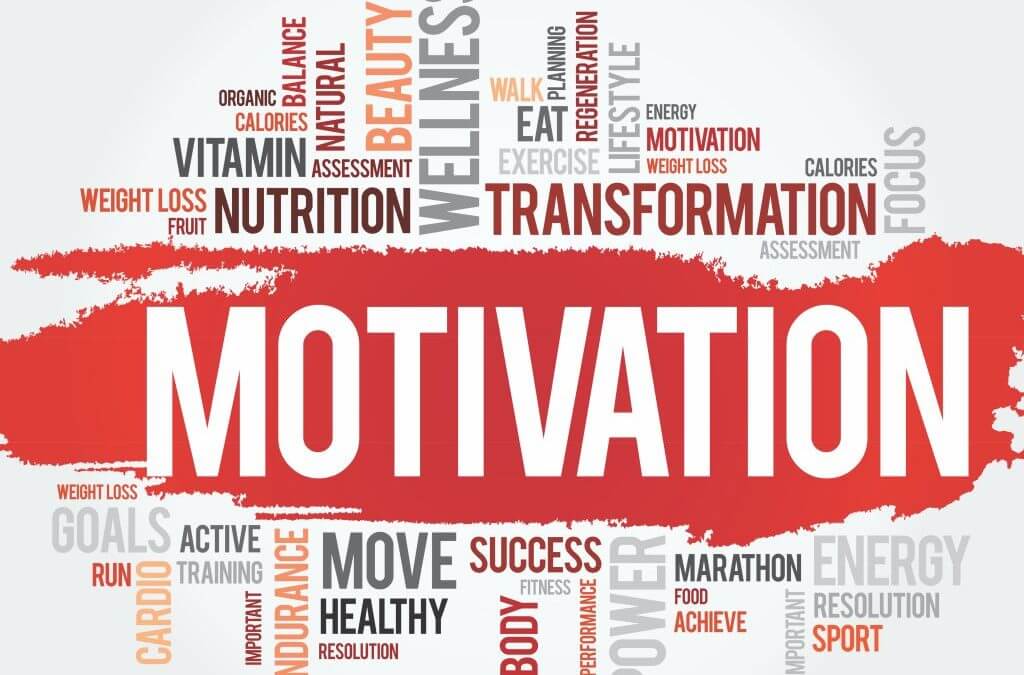
It may be the best way for you to lose weight. It is one of the most time-consuming and difficult to keep up with, especially for those who don't have the time or the desire to exercise. You can make your workout enjoyable and fun. This will help you stick with it. This is not an easy task. Let's look at some ways to keep your workouts fun and rewarding. Start by assessing your current fitness level. You can set realistic goals and work out how many days it takes to reach them.
A good way to keep a workout program going is to duplicate a technique that works well for you. Try to copy someone else's style. If a friend has a healthy habit you can also copy it. This will help you stay motivated. It's easier to maintain your routine by using a copy/paste method. It will make it easier for you to reach your goal consistently.

Set up a schedule as a way to get started in a workout program. Although this is a great way of getting into the habit and making a commitment, a schedule can make it difficult to stick to. So that you are more motivated to get outside, set different days for each exercise. You don't have to be disappointed if you are unable to make it. Make healthier food choices, do more stretching, and eat more nutritiously.
Specific goals are another good way to adhere to a workout program. To stay on track, setting small daily goals can help you keep your eyes open and not get distracted. By setting small goals, you can increase your confidence in yourself and be more successful at sticking to your exercise routine. You'll also get the most mileage from your time on treadmill. You'll see small improvements in yourself, your body and motivation by setting daily goals.
Timing your workout is vital. It is important to choose the right time for your workout and to avoid eating at the wrong time. You'll be more likely stay on track if you plan your workouts around the meals that you eat. You will feel happier and more successful. You'll be glad you did. Just make sure to set yourself a realistic weekly goal and make sure to follow it.

For your health, a workout program is essential. It's not enough to simply have a good routine and a positive attitude. To see positive changes in your health, you must be consistent. You need to identify what motivates you, and then stick with it. Setting a goal will make it easier to stick with it. You should exercise at home even if you can't make it to the gym.
FAQ
How can I lower my blood pressure
Find out the causes of high blood pressure first. Then you need to take steps to reduce this cause. This could mean eating less salt, losing some weight, taking medication, and so on.
Exercise is also important. If you don't have time for regular exercise, then try walking as often as possible.
If you're not happy with how much exercise you're doing, then you should consider joining a gym. A gym that has other members who are motivated by your goals will be a good choice. It's much easier to follow a routine if someone is with you at the gym.
What can I do to boost my immune system?
The human body consists of trillions of cells. These cells collaborate to create organs, tissues and other functions. Another cell takes its place when a cell dies. Hormones, which are chemical signals that allow cells to communicate with one another, enable them to do so. Hormones regulate all bodily functions from growth and developmental to metabolism and immunity.
Hormones, chemicals that are secreted throughout the body by glands, are chemicals. They circulate through the blood stream and act as messengers to regulate how our bodies function. Some hormones are produced internally while others are made outside of the body.
Hormone production begins when a hormone-producing gland releases its contents into the bloodstream. Once hormones have been released, they travel through the body until reaching their target organ. Some hormones are only active for a brief time. Others hormones remain active longer and still have an influence on the body's functioning long after they leave bloodstream.
Some hormones may be produced in large numbers. Some hormones are produced in large quantities.
Some hormones are only produced at certain times in your life. The production of estrogen can occur during puberty and pregnancy, as well as menopause and old age. Estrogen aids women in developing breasts, maintaining bone density and preventing osteoporosis. It promotes hair growth as well as keeping skin soft and smooth.
What causes weight loss as we age?
How can you tell if your bodyweight has changed?
If there are less calories than muscle mass, then weight loss is possible. This means that daily energy needs must be greater than the calories consumed. Low activity levels are the most common cause for weight loss. Other causes include illness, stress, pregnancy, hormonal imbalances, certain medications, and poor eating habits. Weight gain occurs when there is more fat than muscle mass. It occurs when people consume more calories per day than they need. It can be caused by overeating or increased physical activity as well hormonal changes.
Our bodies lose weight because we eat fewer calories than we burn. Exercise regularly increases your metabolism rate, which allows you to burn more calories every day. But, this does not mean that we will be thinner. It is important to know if we are losing weight or gaining muscle. Weight loss is possible if you burn more calories than you consume. But if we're consuming more calories than we're burning, then we're actually storing them as fat.
As we age, we become less agile and don't move as often. We also tend to eat less food than we did when we were younger. Also, we are more likely to gain weight. On the other hand, we have more muscle mass and look larger than we actually are.
If you don't weigh yourself every week, it's impossible to determine how much weight has been lost. There are many different ways to measure your weight. You can measure your waist, hips and thighs as well as your arms. Some prefer to use the bathroom scales, others prefer to use tape measures.
You can track your progress by weighing yourself at least once per week and measuring your waistline every month. To see how far you have come, you can take photos of yourself every few month.
You can also look up your height, weight and body measurements online to determine how much you weigh. If you're 5'10' tall and weigh 180lbs, you'd likely weigh 180lbs.
What is the best food for me?
Many factors influence which diet is best for you. These include your age, gender and weight. You should also consider how much energy your exercise consumes, whether you like low-calorie or high-calorie foods, and what you enjoy in terms of eating fruits and veggies.
Intermittent Fasting is an alternative to traditional fasting if you are looking to lose weight. Intermittent fasting is a way to eat only certain meals during the day instead of three large meals. This may be a better option than traditional diets with daily calorie counts.
Studies have shown that intermittent fasting can improve insulin sensitivity and decrease inflammation. This could lead to improved blood sugar levels, and a lower risk of developing diabetes. Some research also suggests that intermittent fasting might promote fat loss, and improve overall body composition.
Exercise: Good or bad for immunity?
Exercise is good for your immune systems. Your body creates white blood cells when you exercise that fight infection. You can also eliminate toxins from the body. Exercise can prevent diseases such as cancer and heart disease. It can also lower stress levels.
But, too much exercise can lead to a weakening of your immune system. If you work out too hard, your muscles become sore. This can cause inflammation as well as swelling. To fight infection, your body will produce more antibodies. However, these antibodies can also cause allergic reactions and autoimmune diseases.
So, don't overdo it!
What is the difference in calorie and kilocalories?
Calories are units used to measure the amount of energy in food. Calories are a unit of measurement. One calorie is equal to one degree Celsius in energy.
Kilocalories are another way to describe calories. Kilocalories are expressed in thousandths (or a calorie). 1000 calories equals 1 kilocalorie.
What is the difference of fat and sugar?
Fat is an energy source that comes directly from food. Sugar is a sweet substance found naturally in fruits and vegetables. Both fats, as well sugars, provide the same number calories. But, fats have more calories than sugars.
The body stores fats and they can lead to obesity. They cause cholesterol buildup which can lead to strokes and heart attacks.
Sugars are quickly absorbed by the body and provide instant energy. This causes blood glucose levels to rise. High blood sugar levels can cause type II diabetes.
Statistics
- The Dietary Guidelines for Americans recommend keeping added sugar intake below 10% of your daily calorie intake, while the World Health Organization recommends slashing added sugars to 5% or less of your daily calories for optimal health (59Trusted (healthline.com)
- nutrients.[17]X Research sourceWhole grains to try include: 100% whole wheat pasta and bread, brown rice, whole grain oats, farro, millet, quinoa, and barley. (wikihow.com)
- In both adults and children, the intake of free sugars should be reduced to less than 10% of total energy intake. (who.int)
- Extra virgin olive oil may benefit heart health, as people who consume it have a lower risk for dying from heart attacks and strokes according to some evidence (57Trusted Source (healthline.com)
External Links
How To
What does the word "vitamin" mean?
Vitamins are organic compounds naturally found in food. Vitamins are necessary for us to absorb nutrients in the foods we consume. Vitamins cannot be made by the body; they must be taken from food.
There are two types of vitamins: water soluble and fat soluble. Water-soluble vitamins dissolve readily in water. These include vitamin C (thiamine), Vitamin B1 (riboflavin), Vitamin B2 (riboflavin), Vitamin B3 (niacin), Vitamin B6 (pyridoxine), Vitamin C, B1 (thiamine), Vitamin B2 (riboflavin), Vitamin B3 (niacin), and Vitamin B6 (pyridoxine). Fat soluble vitamins are stored in the liver and fatty tissue. Some examples include vitamin D and E, K, A and beta carotene.
Vitamins can be classified according to biological activity. There are eight major types of vitamins:
-
A - essential for normal growth and maintenance of health.
-
C - vital for proper nerve function, and energy production.
-
D - necessary for healthy bones and teeth.
-
E is necessary for good vision, reproduction.
-
K - essential for healthy muscles, nerves, and bones.
-
P – vital for building strong bones.
-
Q - aids digestion and absorption of iron.
-
R is required for the production of red blood cells.
The recommended daily allowance of vitamins (RDA), varies according to age, gender, physical condition, and other factors. The U.S. Food and Drug Administration has established the RDA values.
For example, the RDA for vitamin A is 400 micrograms per dayfor adults 19 years or older. For fetal development, pregnant women need 600 mg per day. Children ages 1-8 require 900 micrograms per day. For infants younger than one year, 700 micrograms are required daily. However, this number drops to 500 micrograms each day for children aged 9-12 months.
Children between the ages of 1-18 need 800 micrograms per daily for obesity, while children overweight require 1000 micrograms. Children underweight or obese will need 1200 mg per day.
2200 mg of vitamin A per day is required for children aged 4-8 who have been diagnosed by anemia.
2000 micrograms are required daily for good health in adults over 50. Breastfeeding or pregnant women require 3000 micrograms per daily due to higher nutrient demands.
Adults over 70 need 1500 micrograms daily, as they lose 10% of their muscle every ten years.
Women who are pregnant and lactating need more nutrients than the RDA. Pregnant mothers need 4000 micrograms per daily during pregnancy and 2500 after giving birth. Breastfeeding mothers need 5000 mg per day when breastmilk is being produced.